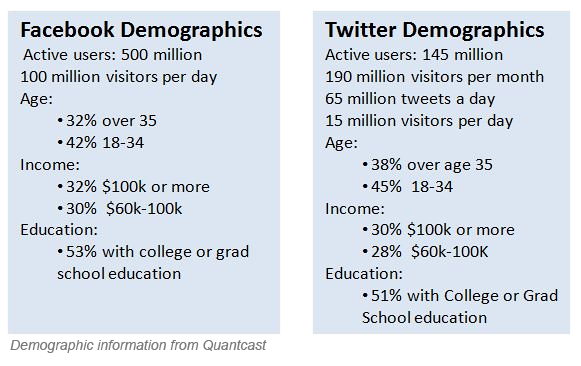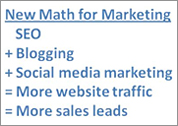I spend a lot of time talking with B2B business owners and CEOs about lead generation. There is a lot of interest among CEOs in generating leads in new ways, such as internet marketing. It’s more difficult than ever to reach corporate decision makers through cold calling. They are hearing this from their sales teams. But when the conversation turns to using social media, such as Facebook and Twitter, many CEOs are quick to dismiss these sites as something for their kids, not their business.
We talk with clients about the enormous shift in buyers’ behavior caused by the internet. Consider the following:
- C-level executives spend 16 hours per week on the internet (excluding email).
- 40% of CIOs regularly use social media groups to keep themselves informed and educated.
- 80% of buyers researched the product and vendor before agreeing to talk with a sales person.
- More than 75% of companies report that they “found” their vendors after an online search.
Enterprise buyers and decision makers are using the internet to educate themselves about new products and services. It’s vital for your company to be found where these B2B buyers are spending time on the internet.
There are three key components to getting found on the internet. They are:
- SEO (search engine optimization)
- Blogging
- Social media marketing
SEO is all about optimizing your website so that search engines can find it. This is a no-brainer. However, if your website hasn’t been optimized for SEO within the past two years, it’s time to revisit this area. SEO techniques change quickly.
CEOs understand SEO. We can run reports that show hard statistical evidence about website traffic and how they rank for keywords. We can show how they compare with key competitors.
The next two techniques to getting found on the internet often generate pushback. With blogging, once we explain the importance of generating relevant content, and how having a steady stream of fresh relevant content should tie into their SEO strategy, most CEOs get it. The common pushback is, “we don’t have time to blog.” When it’s understood that they can partner with a marketing agency to minimize the internal time investment for blogging, they usually jump onboard.
The third leg of the getting found strategy – social media marketing– is met with the most skepticism. “Twitter? Facebook? My daughter and her friends play with those. We’re not going to spend our marketing dollars on Twitter.”
First of all, let’s dispel the myth that Twitter and Facebook are just for teenagers – check out the chart below:

If Facebook was a country, it would be the third largest country in the world. Facebook has surpassed Google as the most visited website on the internet. Roughly 1/4 of the total number of users of the internet use Facebook. Facebook’s user count is what the entire internet had back at the start of 2002.
32% of Facebook’s users are over 35 years old and have $100,000 or more in income. That’s around 160 million users with those prime demographics. And the demographics for Twitter are similar. More than 100 million users signed up for Twitter in the past year! These sites are not just for kids. There’s serious business and marketing happening at both sites. Companies such as IBM, Coca Cola, Ford and Oracle all participate in social media. They do this because it pays off.
You don’t have to have a marketing budget like Ford to participate in social media and to generate leads from your activities. Here’s a simple list of how to get started.
![]()
![]()
Open accounts at Facebook and Twitter. They’re free.
- Brand the sites with your company logo, company description and contact information.
- Add links for your corporate website and blog.
- Link your Twitter account to your Facebook accounts. That way, each message that you post on Twitter (called a Tweet) will automatically get posted on Facebook.
- As you create new blog articles or content, such as white papers, ebooks, videos or podcasts, let everyone know about them using each of these social media sites. For Twitter, that means writing a short message (a Tweet) with a link to the blog article or new content. If you followed step 4, this tweet will appear in Facebook automatically.
Just like Google, each of these social media sites allows search capabilities. If someone searches on the topic of your blog article, there’s a chance that they’ll find your page and click through to your blog. Also, the major search engines – Google, Yahoo and Bing – index these social media sites, so content posted at these sites can also be found by search engines.
Think of internet marketing as a three step process, a combination of SEO, blogging and social media marketing. Used together, it’s a more powerful tool than just one of these activities on their own. The combination of the three drives more traffic to your website, and more traffic is fundamental to generating more leads from the internet.
What’s your experience with using social media as a component of your marketing strategy? Use the comment box below to share your thoughts.
